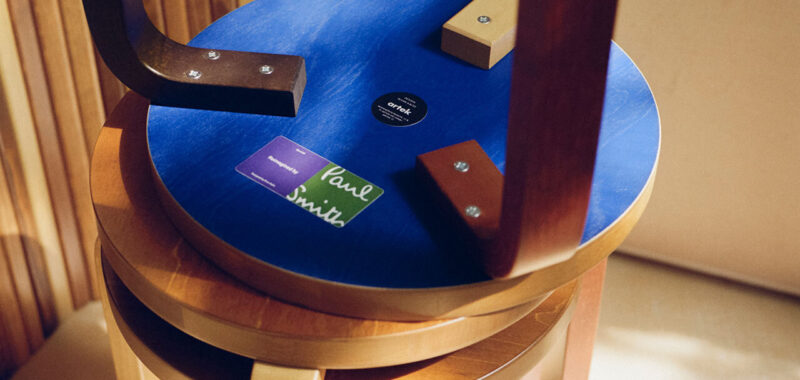Sir Paul Smith, known for his classic tailoring and the iconic 40-color Signature Stripe, has teamed up with Artek to reimagine three classic designs in their collection. Artek Reimagined by Paul Smith includes: Stool 60, Screen 100, and Coat Rack 109. Always an admirer of Alvar and Aino Aalto, he is heavily inspired by their work and influence in the scope of modern design.

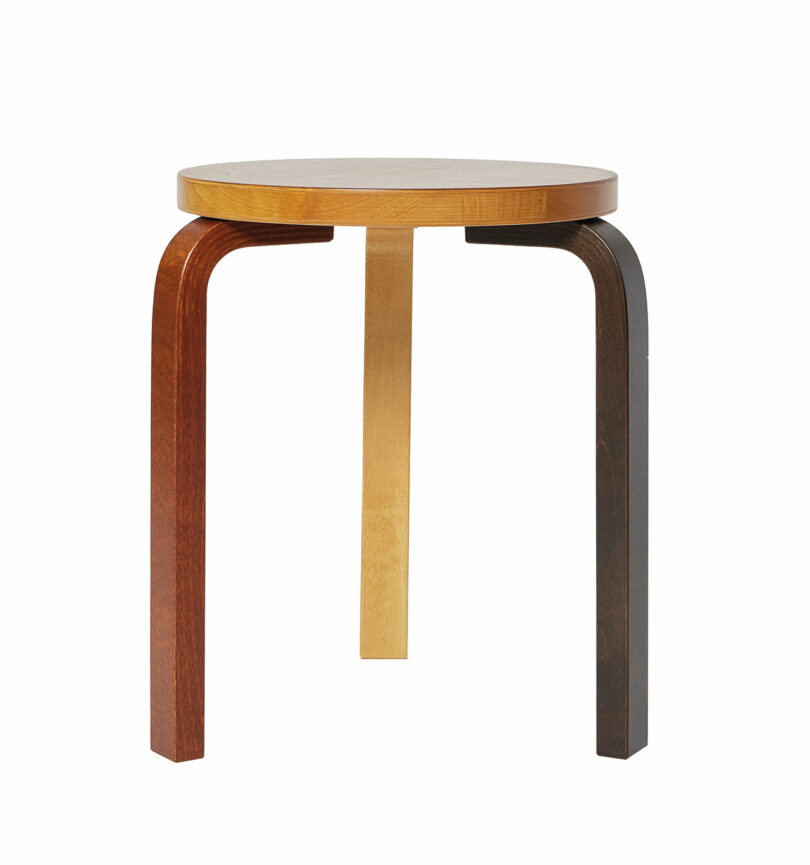
Stool 60 is quite possibly one of the most iconic pieces of the 20th century. Designed in 1933 for the Vyborg Library, the stackable stool is instantly recognizable. The design has been produced from high-quality Finnish birch at the same factory, using the same techniques, for over 80 years. The sloping twist of a stack of Stool 60s, well worn, are something most of us can recall from gathering halls and meeting places in the neighborhood. The beauty of an incredibly hardy product is that they last for a very long time – Aalto was known to throw his prototypes to expedite the product testing process.
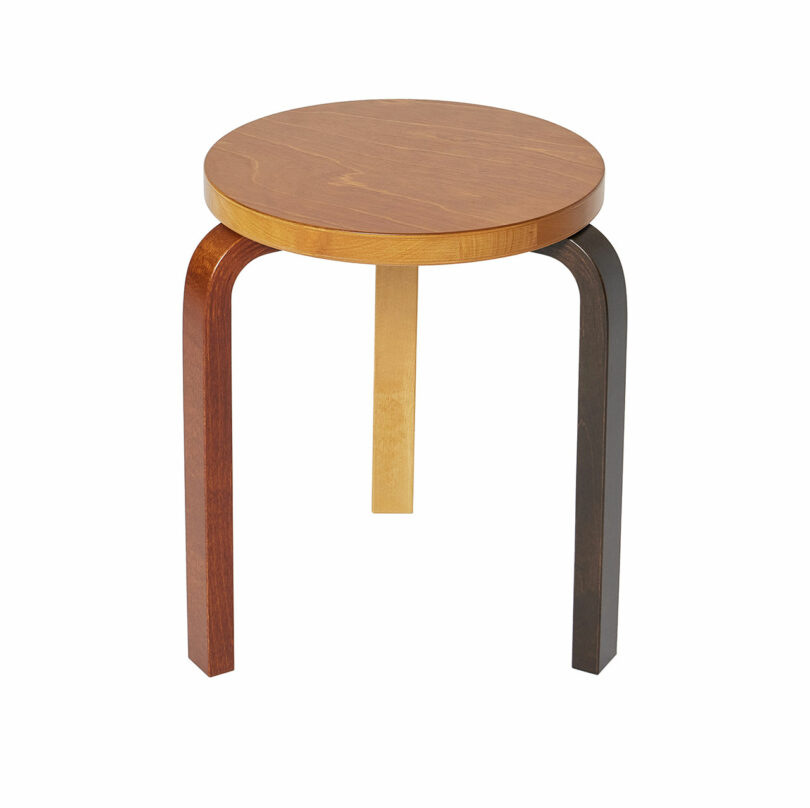
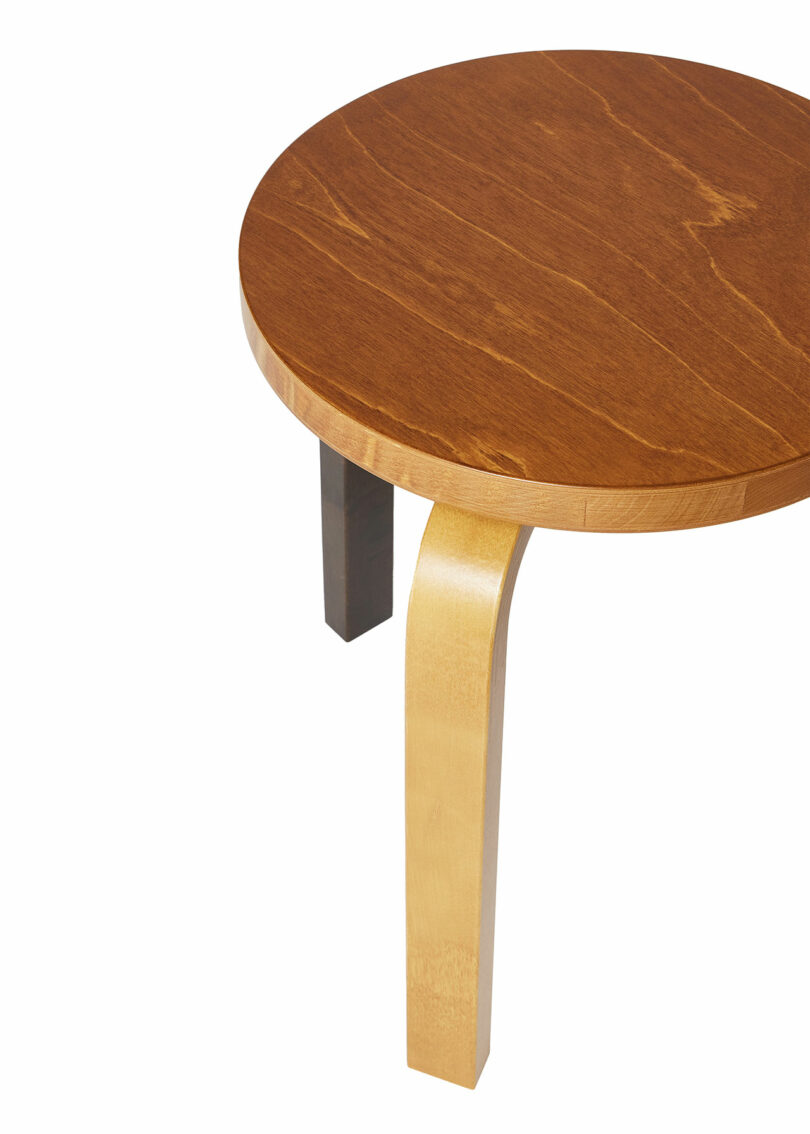
Aalto was a pioneer of Romantic Functionalism, stepping out of the white box of traditional modernism that was popular at the time. Utilizing what was cutting edge in his day, bent plywood was steadily gaining steam within the furniture community. Cohesion was paramount – all details of his buildings and furniture needed to consider the humanity of its occupants first, above all else. “We may say that there is always human error in architecture, and on close observation we find that this is necessary, since it is impossible to express the richness of life and its positive qualities without such error,” said the prolific designer.
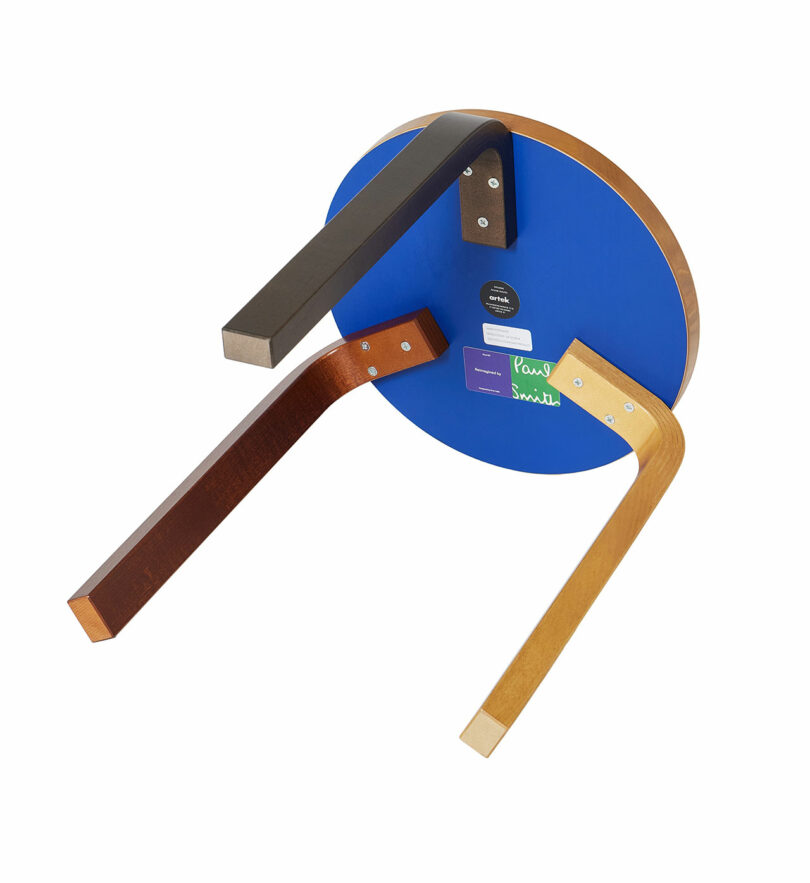
While Smith’s Signature Stripe contains 40 colors, the reserved nature of Aalto’s designs limited the scope of this collaboration to just four. A nod to the brilliant linings that hide cheekily beneath Smith’s suiting, the bottom of the Stool 60 is painted a bright cobalt blue.
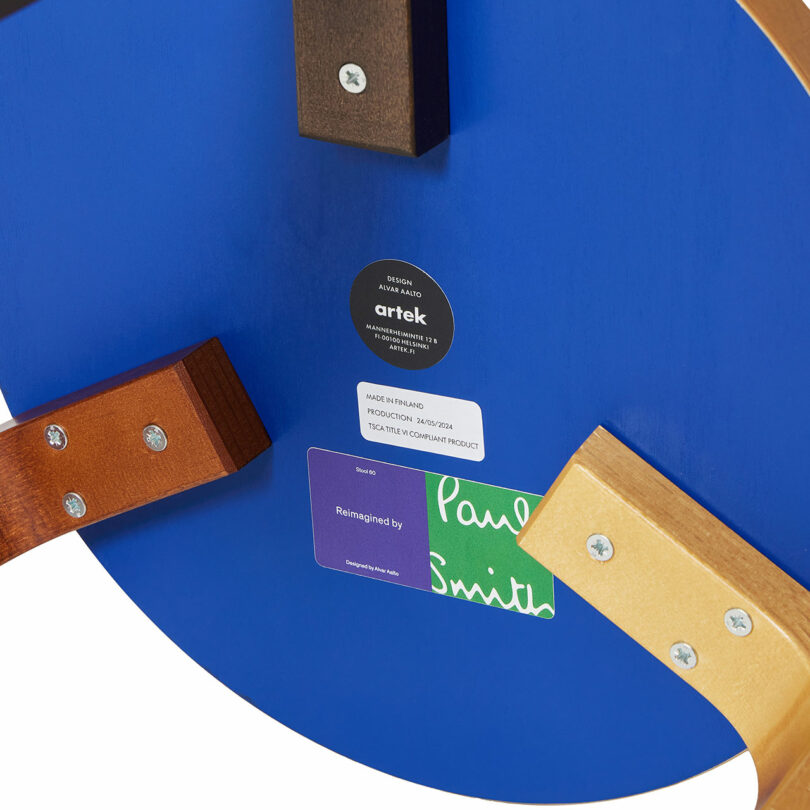
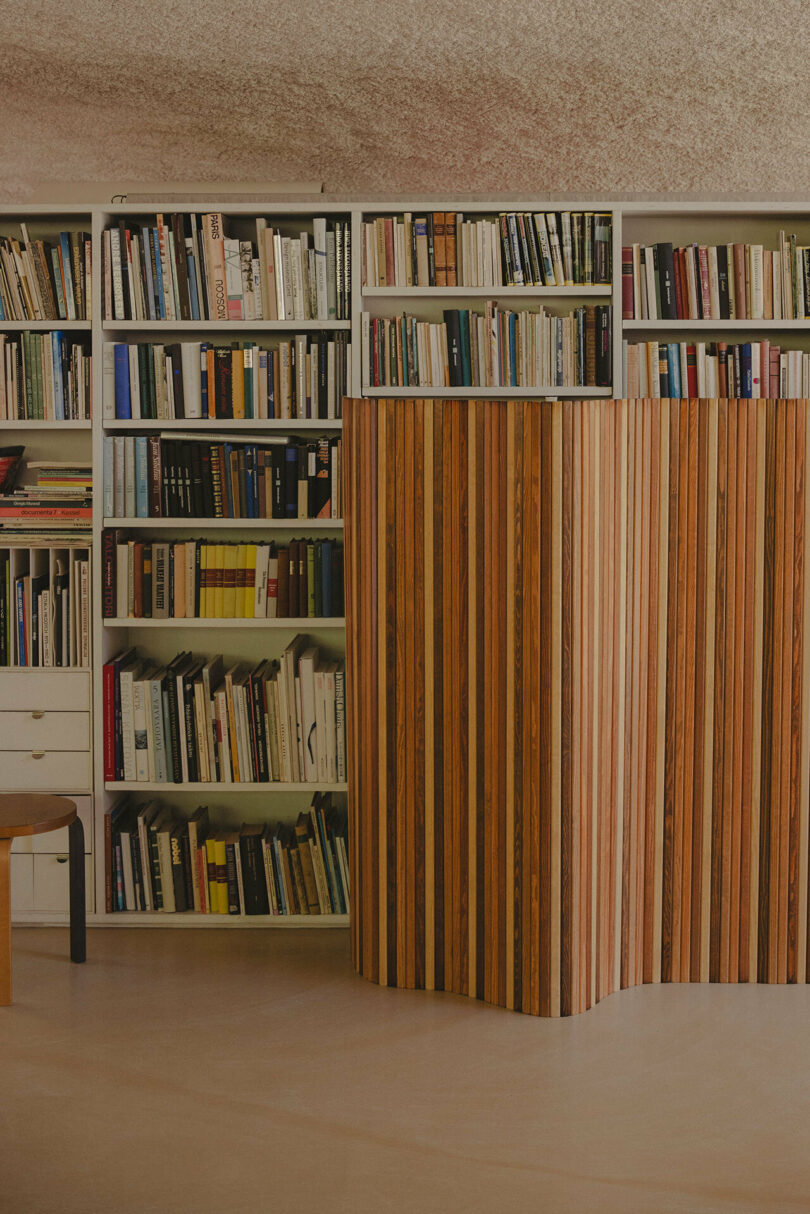
Screen 100 was designed in 1936, and originally was made with one color of stain. To celebrate the collaboration between Paul Smith and Artek, four different colors of stain grace the wooden boards of the screen, lending a more forest-like quality to the piece. The different stains highlight beautiful hues within different beams, creating an organic landscape of colors amongst the undulating curtain of the screen.
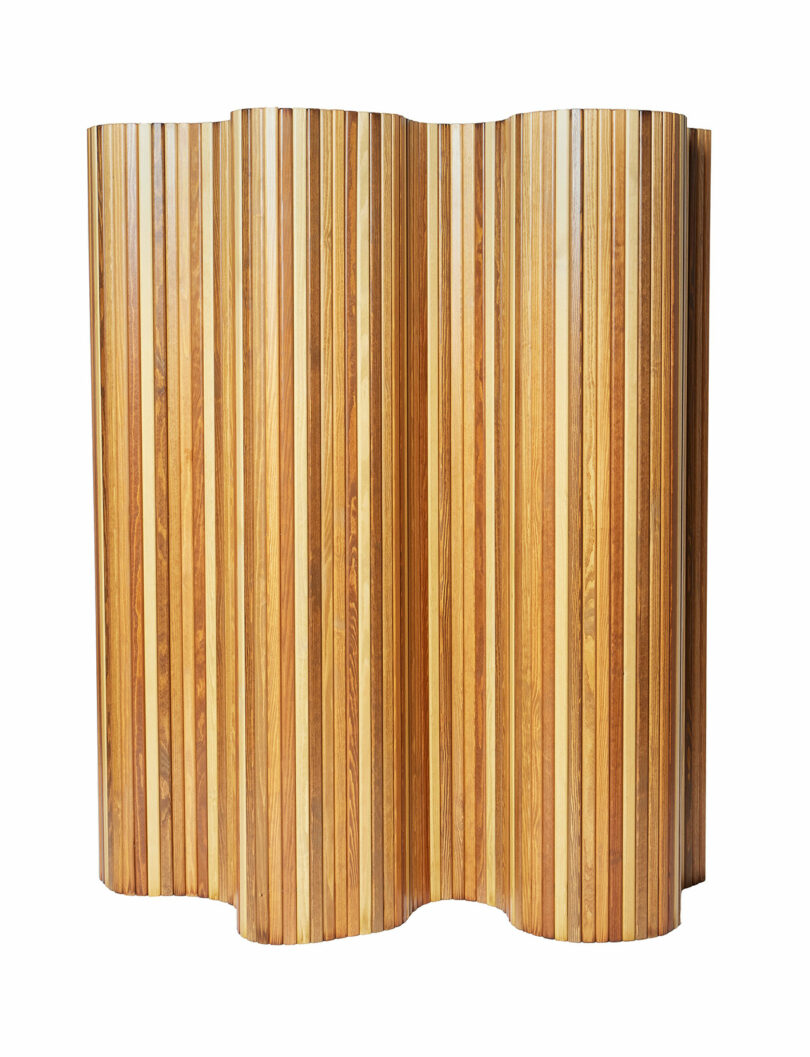
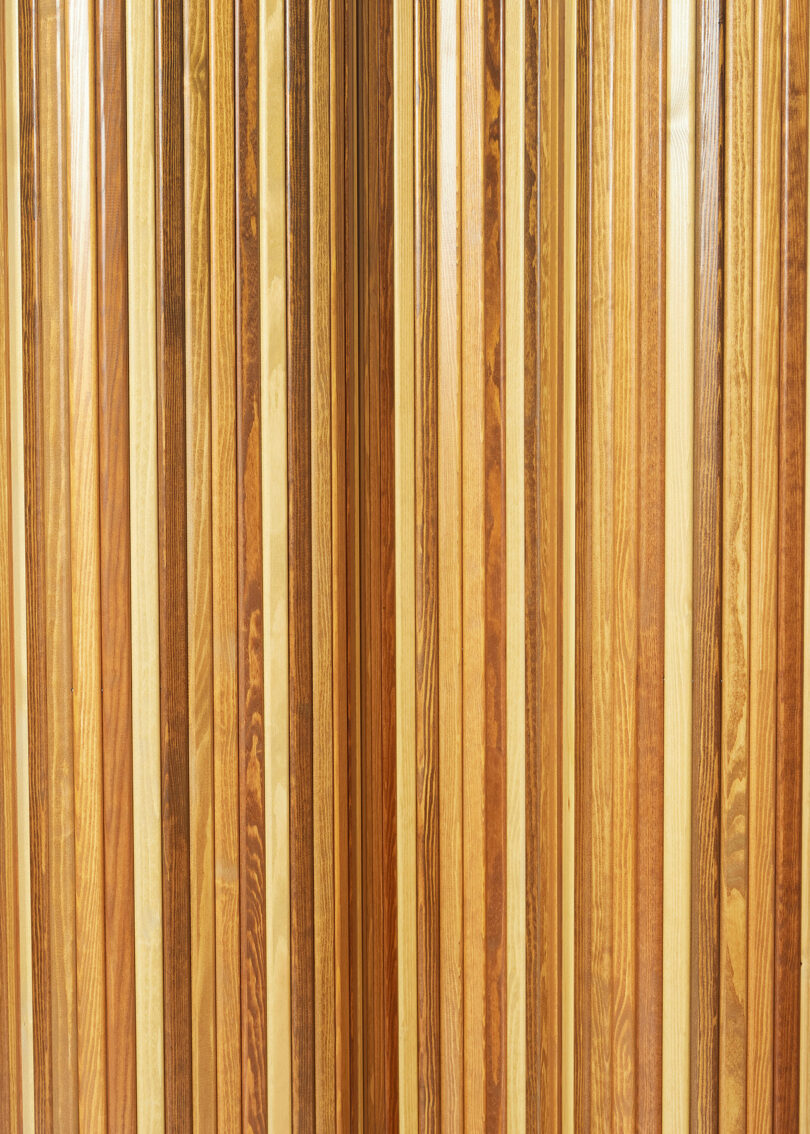
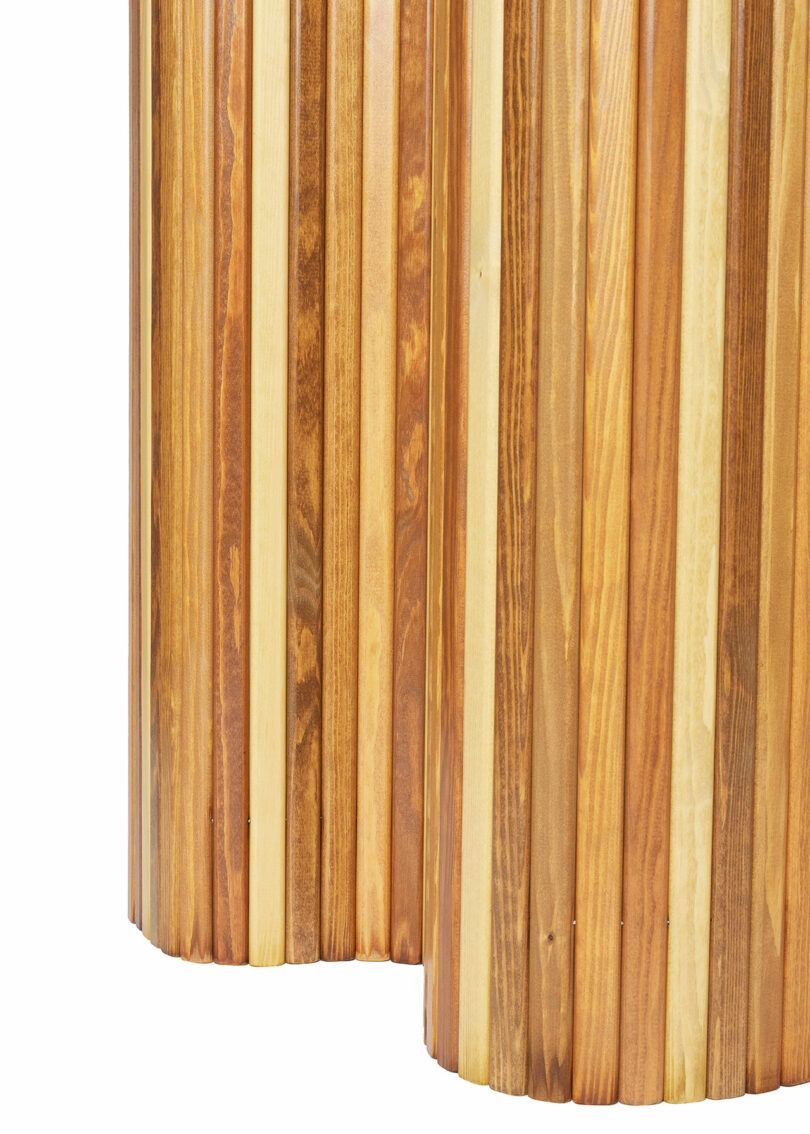
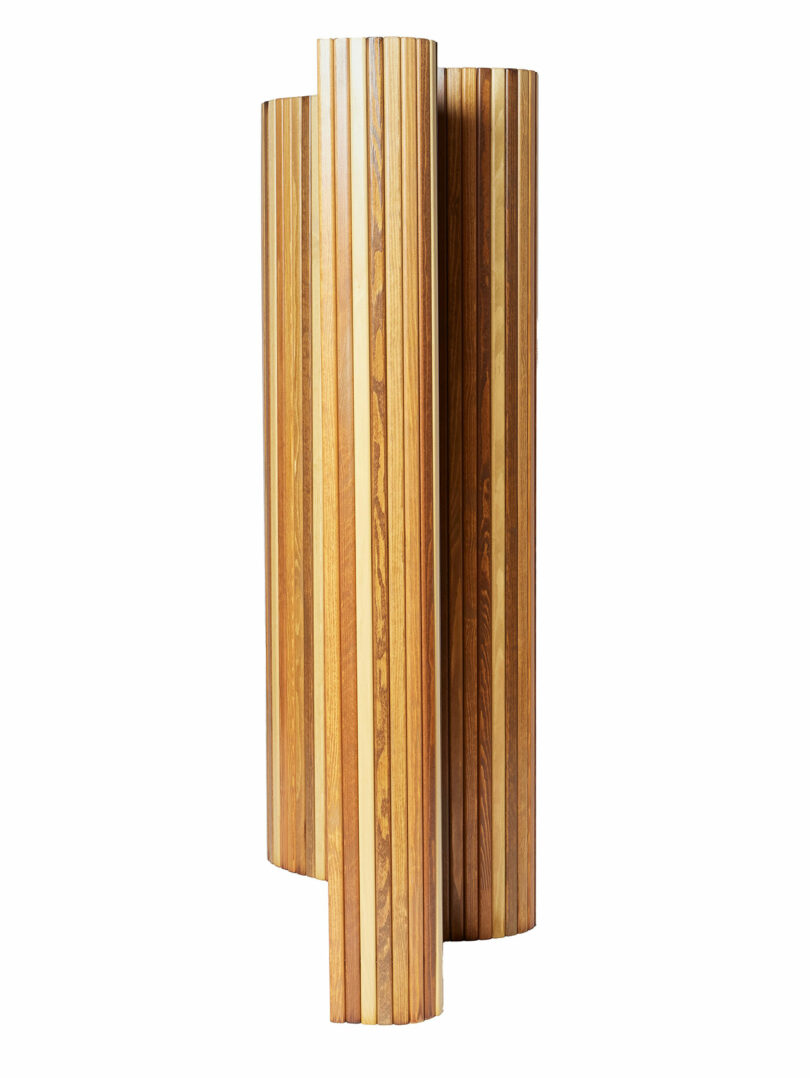

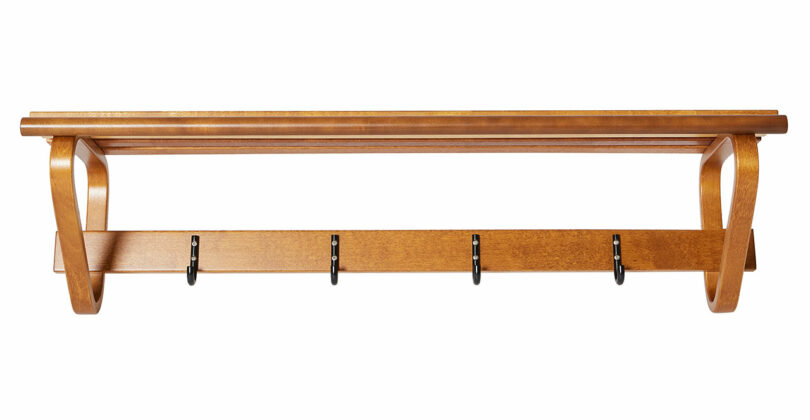
The Coat Rack 108 is another Aalto staple, also designed in 1936. This was designed as part of his ‘domestic helpers’ series, meant to be stationed at an entryway to store coats, bags, and anything else that might fit on the rack above. Thoroughly functional, it has simplistic and clean lines – form language strongly associated with Artek’s principles.
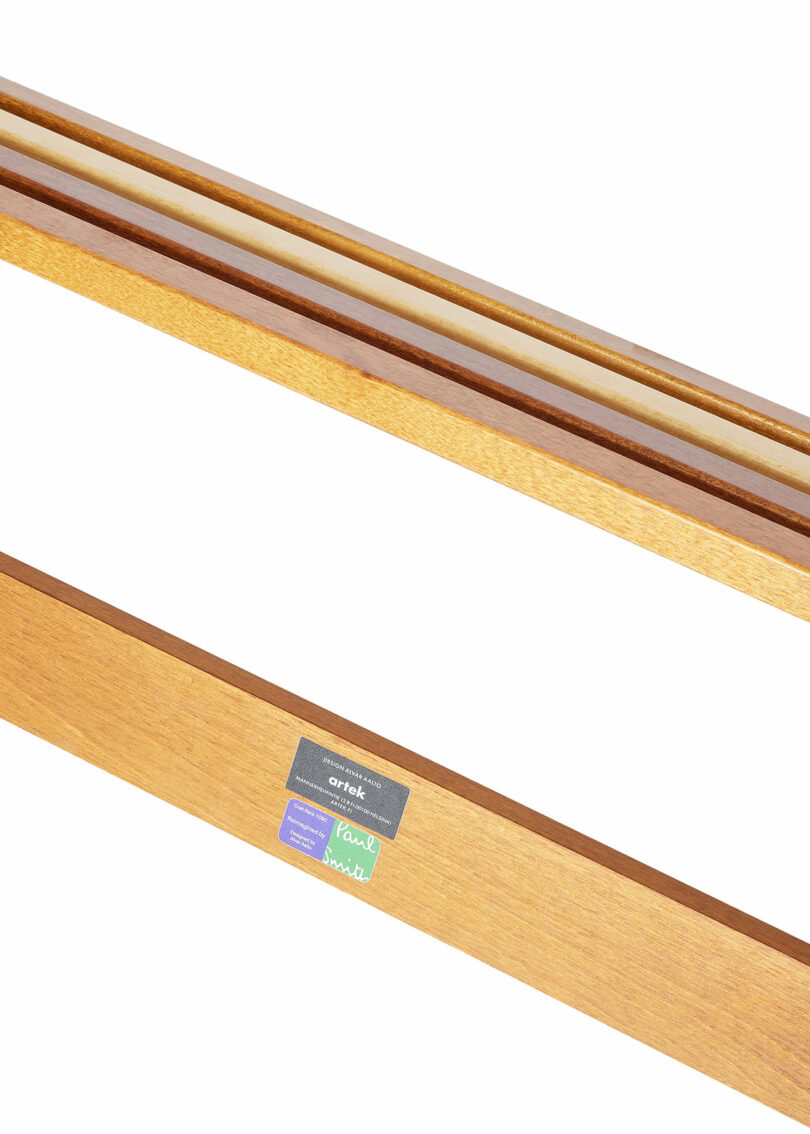
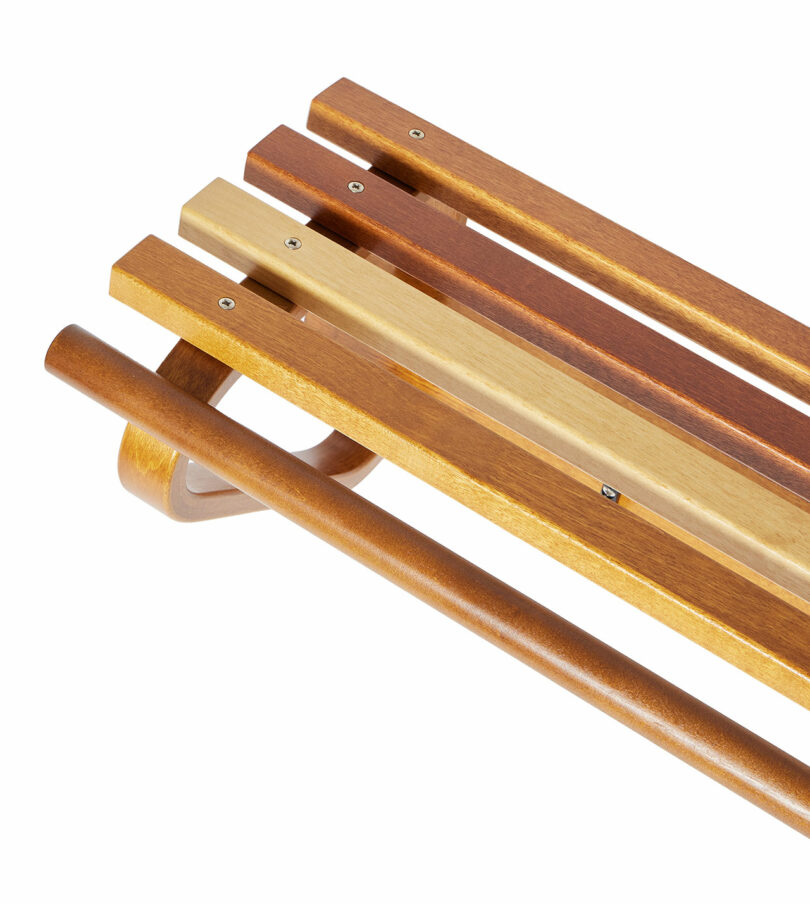
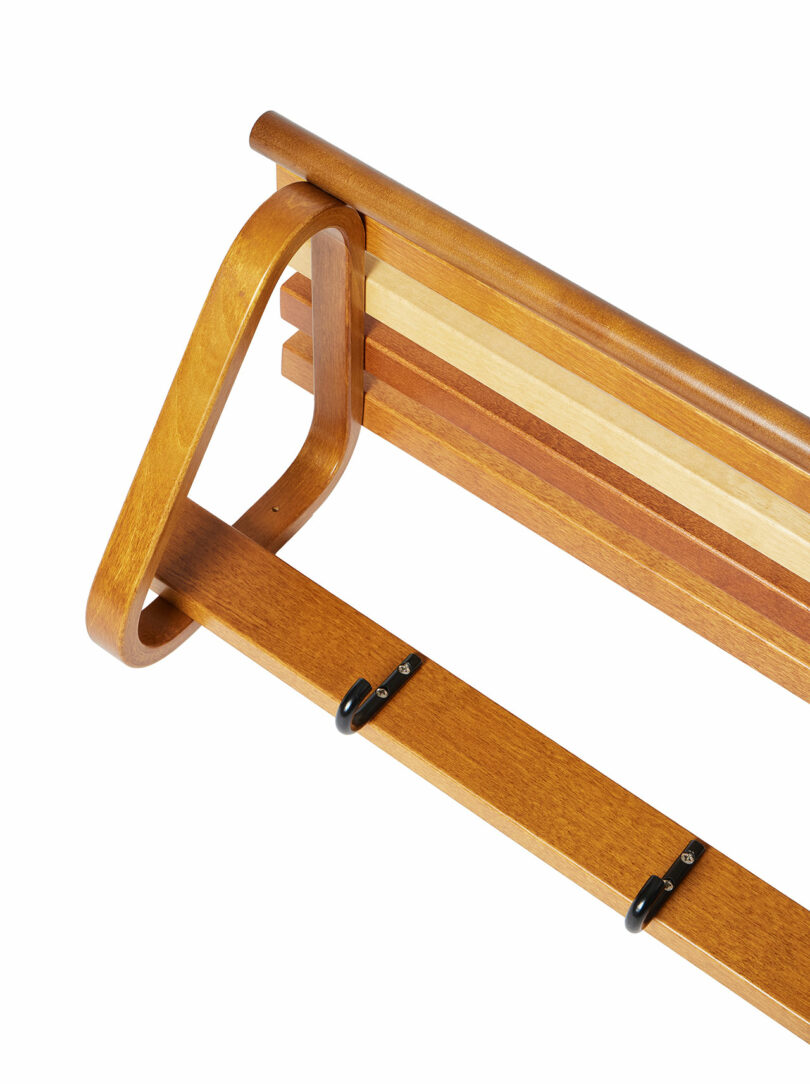
Always a lover of refined splashes of color, Smith adds a fresh take to these standards that revitalize interest in Artek’s storied collection. Sustainability being a key component of the Paul Smith brand, it seems natural to start with products that you’ll never have to replace.
Artek proudly houses and refurbishes the many vintage Aalto pieces that exist around the world. Called 2nd Cycle, this initiative started in 2011 focuses on bringing consumers, designers, and collectors together to appreciate all things Artek. The fact that there are so many surviving pieces today speaks to the craftsmanship and consideration that went into making all pieces within the collection.

The Artek Reimagined by Paul Smith collection is currently available on the Paul Smith official website, as well as select Paul Smith shops.

